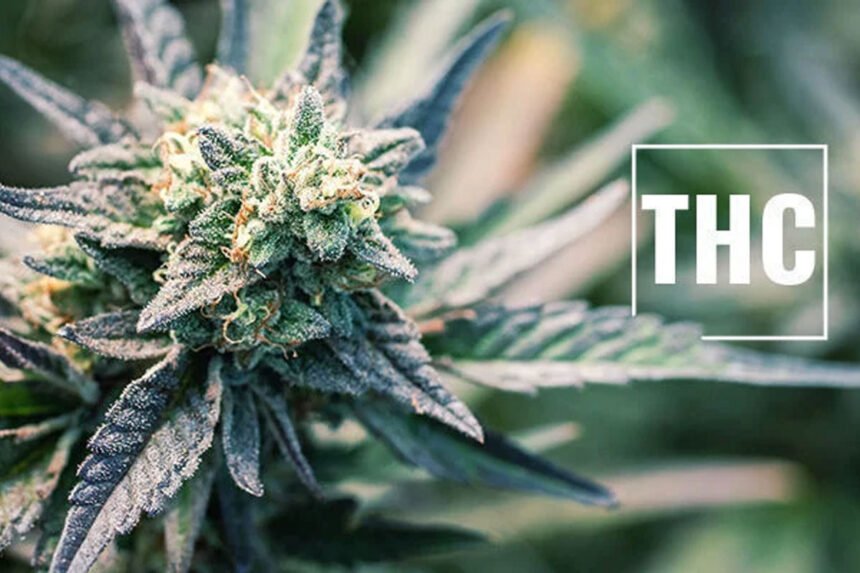Delta-9-tetrahydrocannabinol (THC) is the principal psychoactive molecule found in the cannabis plant. Its notoriety stems from its ability to induce a euphoric “high,” making it a focal point in discussions about marijuana. As the landscape of cannabis legalization evolves, understanding THC becomes crucial for both users and policymakers. This article delves into the multifaceted aspects of THC, including its chemistry, effects on the body and mind, legal status, and its comparison with cannabidiol (CBD).
Chemistry and Origin
THC and CBD are both cannabinoids derived from the Cannabis sativa plant. Despite their shared origin, they exhibit markedly different properties and effects.
Chemical Structure
Both THC and CBD share the same molecular formula: C21H30O2. However, their distinct arrangements of atoms result in vastly different chemical properties and physiological effects. THC’s structure allows it to bind with the CB1 receptors in the brain, leading to its psychoactive effects. In contrast, CBD interacts differently with the body’s endocannabinoid system (ECS), primarily influencing CB2 receptors without causing intoxication.
Source
THC is most abundant in marijuana, a variant of Cannabis sativa with high concentrations of this compound. Conversely, CBD is more prevalent in hemp, another variety of the same plant species with THC levels typically below 0.3%.
Effects on the Body and Mind
Psychoactive Properties
THC is renowned for its psychoactive effects. When consumed, it stimulates the brain’s reward system by releasing dopamine, a neurotransmitter associated with pleasure and reward. This interaction results in the “high” that users experience, characterized by altered sensory perception, euphoria, and relaxation.
Short-Term Effects
The short-term effects of THC consumption can vary depending on the dose, method of consumption, and individual tolerance. Common immediate effects include:
- Euphoria: A sense of heightened well-being and happiness.
- Altered Sensory Perception: Enhanced visual and auditory perception.
- Relaxation: A feeling of calm and reduced anxiety.
- Increased Appetite: Often referred to as “the munchies.”
- Impaired Coordination: Difficulty performing tasks that require fine motor skills.
- Short-Term Memory Loss: Temporary issues with memory recall and retention.
Long-Term Effects
Long-term use of THC can lead to more significant health implications, including:
- Cognitive Impairments: Chronic use can affect learning, memory, and attention.
- Mental Health Issues: Increased risk of anxiety, depression, and in some cases, psychosis.
- Dependence: Regular use can lead to tolerance and dependence, resulting in withdrawal symptoms upon cessation.
- Respiratory Problems: Smoking marijuana can cause respiratory issues similar to those caused by tobacco.
Medical Uses
Despite its Schedule I classification by the DEA, which denotes a high potential for abuse and no accepted medical use, THC has recognized therapeutic applications. Medical marijuana is prescribed for conditions such as:
- Chronic Pain: THC’s analgesic properties can alleviate pain.
- Nausea and Vomiting: Particularly in patients undergoing chemotherapy.
- Appetite Stimulation: Beneficial for individuals with AIDS or those undergoing cancer treatment.
- Muscle Spasticity: Helpful in conditions like multiple sclerosis.
Legal Status and Regulatory Landscape
Federal vs. State Laws
In the United States, marijuana remains a Schedule I controlled substance under federal law. This classification indicates that it is considered to have a high potential for abuse and no medically accepted use. However, an increasing number of states have legalized marijuana for medical and recreational use, creating a complex legal landscape.
Global Perspective
The legal status of THC varies significantly worldwide. Countries like Canada and Uruguay have legalized recreational marijuana, while others maintain strict prohibitions. The shifting legal frameworks reflect changing societal attitudes towards cannabis and ongoing debates about its risks and benefits.
Comparing THC and CBD
Psychoactivity
The most significant difference between THC and CBD lies in their psychoactive properties. THC is psychoactive and can induce a high, whereas CBD is non-psychoactive and does not produce intoxicating effects. This fundamental distinction influences their respective applications and legal statuses.
Medical Benefits
Both compounds have therapeutic potential but are used for different purposes:
- THC: Effective for pain relief, muscle spasticity, glaucoma, insomnia, and low appetite.
- CBD: Beneficial for reducing inflammation, controlling seizures, combating anxiety and depression, and alleviating chronic pain.
Side Effects
THC’s psychoactive nature can lead to side effects such as dizziness, dry mouth, red eyes, and in some cases, paranoia or anxiety. CBD is generally well-tolerated, with side effects including fatigue, diarrhea, and changes in appetite or weight.
Synthetic Cannabinoids
Synthetic cannabinoids, often known as synthetic marijuana, Spice, or K2, are man-made chemicals designed to mimic THC’s effects. However, they can cause severe and sometimes life-threatening reactions, vastly different from those associated with natural THC. These products are often marketed as legal alternatives to marijuana but are associated with significant health risks.
Recent Developments and Future Directions
Research and Rescheduling
As public perception of marijuana shifts, there is increasing pressure to reclassify it under federal law. Recent reports suggest that the Biden administration is considering rescheduling marijuana, which could have profound implications for research and medical use. Such a move would facilitate more comprehensive studies on THC’s effects and potential therapeutic applications.
Market Trends
The legalization wave has spurred a burgeoning cannabis industry, with a wide array of THC and CBD products hitting the market. From edibles and tinctures to topicals and vape pens, consumers have more options than ever. This diversification reflects growing demand and the evolving understanding of cannabinoids’ benefits.
Public Health Implications
As THC becomes more accessible, public health considerations come to the forefront. Educating users about the risks and safe consumption practices is crucial. Additionally, there is a need for robust regulatory frameworks to ensure product safety and prevent misuse, especially among vulnerable populations like adolescents.
Conclusion
Delta-9-tetrahydrocannabinol (THC) is a complex compound with a wide range of effects on the human body and mind. Its psychoactive properties make it both a subject of intrigue and concern. As the legal landscape continues to evolve, understanding THC’s chemistry, effects, and potential benefits becomes increasingly important. Balanced, evidence-based approaches to regulation and education are essential to maximize the benefits of THC while minimizing its risks.











